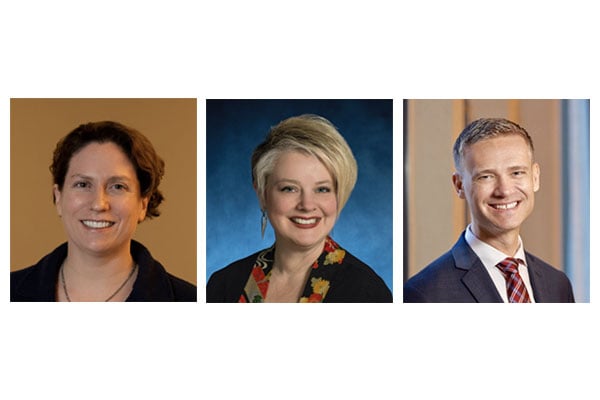International Rotations
An international elective can be a rich experience. By rotating outside of the United States, medical students gain exposure to different cultures, health systems, populations, and medical practices. Even for the student who plans for a future career entirely within the US, recognizing and learning to deal with cultural barriers can be very helpful. By rotating outside of the US, medical students are guaranteed to see a health system that spends less per capita than the American system. In 24 other developed countries, students can see systems that spend less and have better health outcomes than in the US (WHO World Health Report 2000). Because of the extremely high concentration of imaging technologies in the US, students are likely to find a medical practice more reliant on history and physical diagnosis. (For more discussion, listen to this NEJM podcast on international electives.)
However, it is important to carefully reflect on motivation. International medical student electives are primarily learning experiences, and students who go expecting to have a large impact on patient care often return disillusioned.
WHAT TO DO AND WHERE TO GO
International rotations can involve clinical, public health, or research work, or any combination of the three. Many also have an associated language training component.
Students can rotate in countries with many different stages of development. The World Health Organization World Health Report gives recent statistics about health status in different countries, and can help students understand where different countries fall along the epidemiologic transition (In particular, the 2000 report gives detailed information on the levels of technology and expenditure). The October 2002 edition of Student JAMA gives an overview of global health.
A clinical rotation can be in emergency medicine or other specialties. Either choice is appropriate for a student going into emergency medicine. In choosing, remember that the specialty of emergency medicine is new and is in different stages in different countries. C. James Holliman, MD, describes three stages of emergency medicine development. In one stage are countries with mature EM specialties (including board certification, such as Canada, the United Kingdom, Australia, and New Zealand.) A second stage includes countries rapidly developing towards board certification, such as Turkey, South Korea, and Poland, and a third stage exists in countries in which emergency medicine is less developed as a specialty. ACEP's international emergency medicine section has a database of international rotations in emergency medicine. Plus, check out the list of international rotations as well as other helpful resources from EMRA's International Division.
E. Jackson Allison, MD, MPH, chief of staff at the Asheville, NC VAMC and a former Peace Corps volunteer, strongly believes that students will have a much richer experience in a country where they speak the local language. If that is not possible, he suggests that students take at least some language training before departing.
Students should consider safety. In addition to consulting the US State Department travel warnings, Judith Tintinalli, MD, MS of the University of North Carolina, advises that students speak to someone who has first-hand knowledge of the rotation. Drs. Tintinalli and Holliman have also invited students to e-mail them with questions about international EM rotations.
AMSA also hosts one of the best directories of international electives, as well as a guide that is a helpful supplement to this article (and includes detailed information on several sources of funding).
WHEN TO GO
Drs. Holliman and Tintinalli both recommend going late in the senior year of medical school, because students will have a maximum of clinical experience, and will be done with interviewing and the match. Dr. Holliman recommends beginning the planning process at least six months before traveling.
FUNDING
The American Society of Tropical Medicine and Hygiene offers the Benjamin H. Kean Traveling Fellowship in Tropical Medicine, which covers travel expenses. The Yale Scholarships and Grants for International Citizens Program also offers funding. Both programs are competitive. Several other programs with more specific goals are listed in the AMSA guide. Individual universities and other organizations also have scholarships available.
Students can also, of course, take on additional debt. Dr. Holliman urges students to go, despite the cost: "It may mean the difference between $150,000 and $152,000 in debt. Go ahead and spend the money."
PREPARING FOR TRAVEL
In addition to checking the CDC Traveler's Health site, students traveling outside the developed world should also consult a local travel clinic. Remember that some immunizations may need to be given several months before travel.
Dr. Allison recommends students spend some time learning about local culture and customs before going, and thinking best about how to "fit into the woodwork" in another country.
WHILE ABROAD
Remember that feeling homesick, lonely, and isolated is common. Remember that the customs and health practices of the patients and health care workers may be dramatically different from your own. Finally, use caution while working, eating, and traveling.
RETURNING
Returning to the US often presents unforeseen problems. It is not uncommon to feel disoriented or shocked in the US, to feel that no one else understands the experience of being abroad. Becoming involved in international emergency medicine can help in making sense of the experience, and developing this interest into part of your career. Joining the International Section of ACEP can also be helpful.
ADDITIONAL RESOURCES
Conferences:
New York Symposium on International Emergency Medicine
ACEP International Conferences
Papers:
Arnold JL:International emergency medicine and the recent development of emergency medicine worldwide. Ann Emerg Med 1999;33:97-103.
Shayne P, Holliman CJ, Wang E, Parrillo SJ:International emergency medicine reference list. J Emerg Med 1999;17(1):159-161.
Keyes LE, Holliman CJ:Reference listing of international emergency medicine journals and web sites. Ann Emerg Med 1999;34(6):786-789.
Groups:
Global Health Education Consortium
EMRA International EM Division
Suggestions
Textbooks (pdf)
Original contribution: 6/2006
Marlow Macht, MSIII (Class of 2008)
Tulane University School of Medicine
EMRA Medical Student Council
Reviewed/Edited: 1/09
J. Daniel Hess, MSIV
University of Maryland School of Medicine
EMRA Medical Student Council
Related Content







